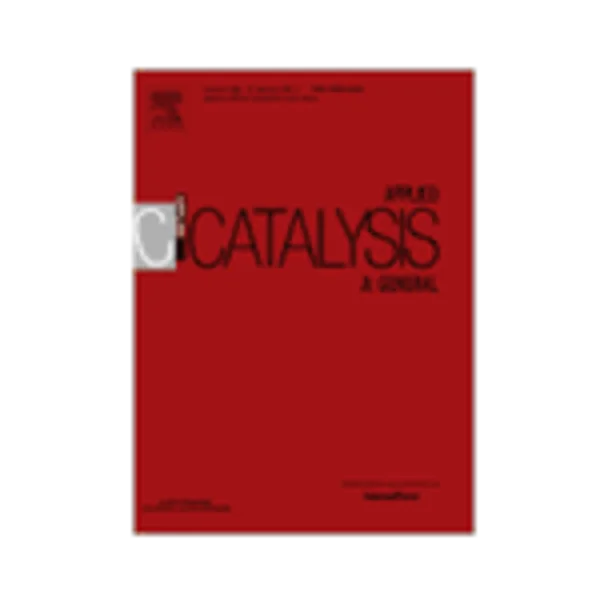-
activity and deactivation nature of ru/mnco3 catalysts for fischer–tropsch reaction
جزئیات بیشتر مقاله- تاریخ ارائه: 1392/07/24
- تاریخ انتشار در تی پی بین: 1392/07/24
- تعداد بازدید: 1188
- تعداد پرسش و پاسخ ها: 0
- شماره تماس دبیرخانه رویداد: -
the catalytic activities and different behaviors for catalyst deactivation by forming surface hydrocarbon deposits were investigated on the cl-free ru/mnco3 fischer–tropsch synthesis (fts) catalysts in a low pressure fixed-bed reactor. catalytic activity of lt-ru(no) was found to be a little higher than that of ru(no). the differences seem to stem mainly from ruthenium particle sizes and reduction behavior of adsorbed co on the catalysts, which would be consistent with the results of ch4 formation from temperature-programmed reduction (tpr) of pre-adsorbed co, as well as ru particle sizes, as ascertained by h2 and co adsorptions and tem measurements. the ru particle sizes of used catalysts obtained after 120 h-reaction were approximately close to those of fresh catalysts and no ruthenium aggregation occurred. the origin of catalyst deactivation was investigated in terms of the extent of hydrocarbon deposition. the adsorbed atomic carbon at the peak temperature around 250–350 °c was eliminated by h2 treatment, but the more heavy hydrocarbons at peak temperature over 400 °c such as polymeric and graphitic carbons were not removed by any treatment. the nature of hydrocarbon deposition would be suggested by measuring the deposited carbon with the help of the characterizations, such as thermo-gravimetric analysis, temperature-programmed reduction and diffuse reflectance infrared fourier transform (ft-ir) measurements.
مقالات جدیدترین رویدادها
-
استفاده از تحلیل اهمیت-عملکرد در ارائه الگوی مدیریت خلاقیت سازمانی و ارائه راهکار جهت بهبود
-
بررسی تاثیر ارزش وجوه نقد مازاد بر ساختار سرمایه شرکت های پذیرفته شده در بورس اوراق بهادار تهران
-
بررسی تأثیر سطح افشای ریسک بر قرارداد بدهی شرکت های پذیرفته شده در بورس اوراق بهادار تهران
-
بررسی تأثیر رتبه بندی اعتباری مبتنی بر مدل امتیاز بازار نوظهور بر نقد شوندگی سهام با تأکید بر خصوصی سازی شرکت ها
-
تأثیر آمیخته بازاریابی پوشاک ایرانی بر تصویر ذهنی مشتری پوشاک ایرانی (هاکوپیان)
-
بهینه زاویه آبگیر در قوس 90 درجه همگرا در حضور ذرات شناور چوبی
-
مروری انتقادی بر نحوه ارزیابی سرمایه فکری
-
مقایسه تجربی رفتار خارج از صفحه سقفهای طاق ضربی تقویت شده
-
بررسی توان اکولوژی استان خراسان رضوی برای تثبیت جمعیت و جلوگیری از مهاجرت ها با رویکرد آمایش سرزمین
-
ارزیابی عوامل خطرساز بروز نارسایی حاد کلیه در جراحی آنوریسم آئورت شکمی
مقالات جدیدترین ژورنال ها
-
مدیریت و بررسی افسردگی دانش آموزان دختر مقطع متوسطه دوم در دروان کرونا در شهرستان دزفول
-
مدیریت و بررسی خرد سیاسی در اندیشه ی فردوسی در ادب ایران
-
واکاوی و مدیریت توصیفی قلمدان(جاکلیدی)ضریح در موزه آستان قدس رضوی
-
بررسی تاثیر خلاقیت، دانش و انگیزه کارکنان بر پیشنهادات نوآورانه کارکنان ( مورد مطالعه: هتل های 3 و 4 ستاره استان کرمان)
-
بررسی تاثیر کیفیت سیستم های اطلاعاتی بر تصمیم گیری موفق در شرکتهای تولیدی استان اصفهان (مورد مطالعه: مدیران شرکتهای تولیدی استان اصفهان)
-
آینده پژوهی در معماری تبیین رویکردهای آینده پژوهانه در حوزه طراحی مسکن
-
نگاهی به بررسی پیامدها ، آثار و تبعات اجتماعی سوءاستفاده از زنان
-
تحلیل عوامل تاثیرگذار بر فطرت
-
بررسی وضعیت حقوقی استفاده ازموشکهای بالستیک توسط ایران و انطباق آن با مقررات بین المللی
-
numerical simulation of impulsive water waves generated by subaerial and submerged landslides incidents in dam reservoirs




سوال خود را در مورد این مقاله مطرح نمایید :